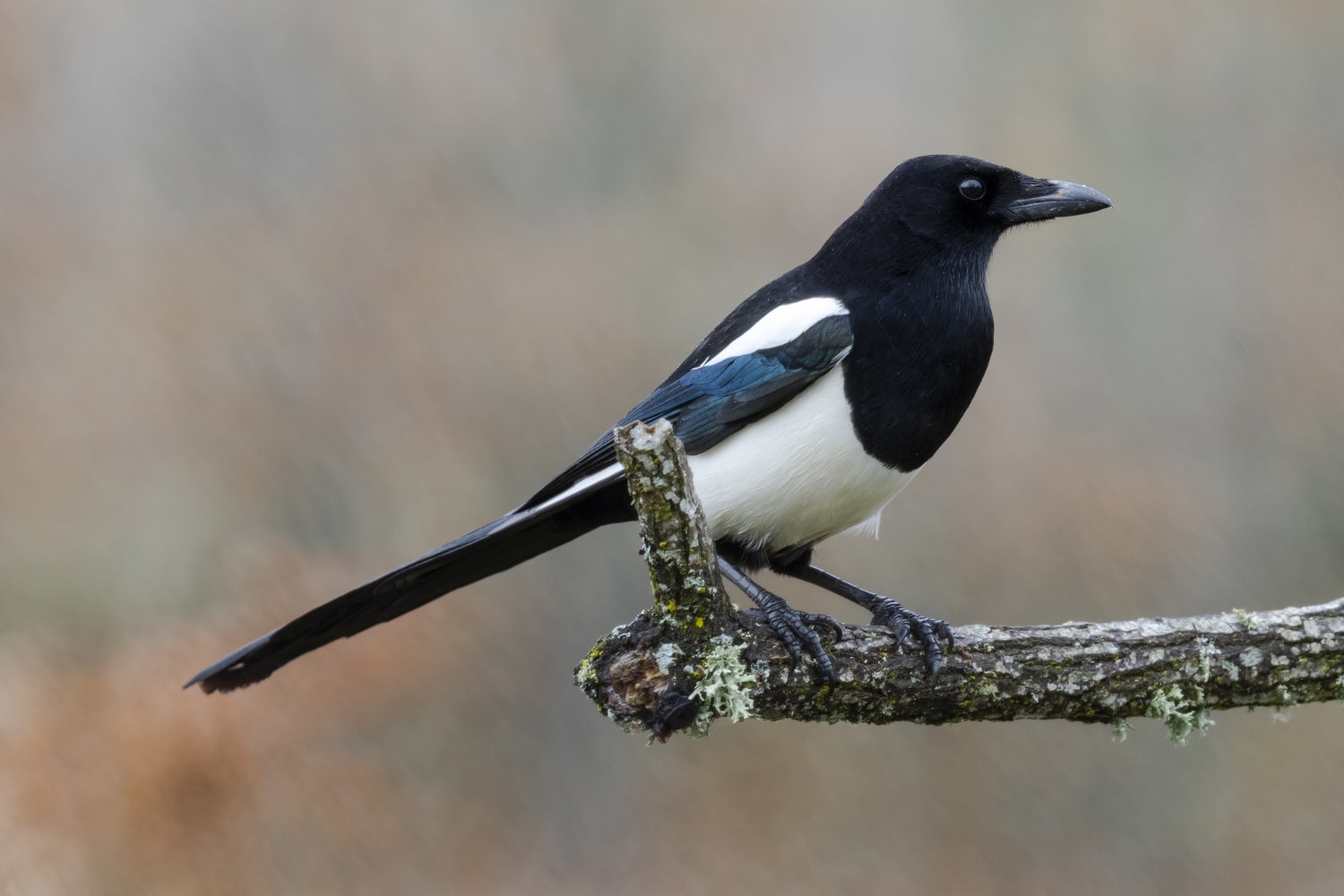Magpies are exceptionally intelligent and socially advanced birds. Their unusual behaviors, impressive memory, and problem-solving skills have fascinated researchers worldwide. Numerous legends and cultural beliefs have grown around these birds over centuries. Observing magpies in their natural habitat offers a fascinating glimpse into the complexity of avian life. In this article, you will discover interesting and surprising facts about magpies that you might not have known.
- Magpies belong to the corvid family, which also includes crows, ravens, and jays. These birds exhibit high levels of intelligence, including logical thinking and advanced problem-solving. Their brains are large in proportion to their body size. Studies show they are capable of conscious decision-making.
- Magpies can recognize themselves in mirrors, which is an ability very few animals possess. This response to their own reflection indicates a high degree of self-awareness. Only a handful of species besides humans demonstrate such behavior. Magpies are part of this rare group.
- These birds communicate through a wide range of vocalizations to express emotions and issue warnings. They are capable of mimicking other animals and even human sounds. Their communication system is complex and adaptable. This reflects their remarkable cognitive abilities.
- In many cultures, magpies carry symbolic meaning. In Anglo-Saxon folklore, the number of magpies seen predicts specific future events. One magpie signifies sorrow, two mean joy, and three bring good fortune. These beliefs are still widespread in parts of Europe.
- Magpies are often associated with a fascination for shiny objects, but they do not always steal them. They are usually motivated by curiosity and a desire to investigate unusual items. Often, shiny objects are abandoned after inspection. It’s more about exploration than theft.
- Magpies sometimes show emotional reactions to the death of another bird from their group. They may gather around the deceased and place twigs or leaves nearby. These ritual-like behaviors suggest complex social emotions. Such conduct is rarely observed in birds.
- Magpies are capable of recognizing human faces and remembering individuals who have harmed them. They can alert other magpies to potential threats based on their past experiences. However, they also remember kindness and may approach trusted humans. This creates a unique bond between species.
- Their nests are intricate structures, often featuring roofs and multiple layers. They use twigs, moss, grass, and even artificial materials like plastic for construction. The same nest is frequently reused for several years. These nests are strong and offer excellent protection for their young.
- Magpies are omnivorous, which makes them highly adaptable in various environments. They consume insects, fruit, small mammals, and even human food scraps. As a result, they thrive in urban and suburban settings. They are commonly seen in parks and near residential areas.
- Though not the fastest fliers, magpies are highly agile and can navigate tight spaces in trees. They skillfully avoid obstacles and predators during flight. They often perch on high vantage points to observe their surroundings. This helps them stay alert and efficient in finding food.
- Magpies engage in playful activities, such as sliding on snow or tossing small objects. These behaviors are not always survival-driven but indicate a well-developed nervous system. Play also strengthens social bonds within flocks. It shows that magpies find joy in their environment.
- They play an important role in ecosystems by controlling insect populations and scavenging. At the same time, they serve as prey for larger birds and mammals. This dual role supports ecological balance. Their presence often indicates a healthy local ecosystem.
- During the breeding season, magpies form stable pairs and jointly care for their young. They groom each other and fiercely defend their nest from intruders. They show high levels of loyalty to their mates. Their family life is remarkably organized.
- In Chinese culture, the magpie is seen as a symbol of joy and good luck. Its image often appears in traditional art and decorative motifs. Seeing a magpie on a rooftop is considered a sign of good news. This reflects the bird’s positive image in Asia.
- Magpie flocks have a clear social hierarchy with dominant individuals leading the group. Older birds teach the younger ones how to find food and avoid dangers. Such structured organization is uncommon among birds. It highlights their advanced social behavior.
- While most magpies are sedentary, some migrate in search of food during colder months. In winter, they may gather in groups to conserve warmth. This cooperative behavior increases their chances of survival. It also shows their adaptability to changing conditions.
These fascinating facts about magpies demonstrate that they are among the most intellectually advanced birds. Their ability to adapt, communicate, and form relationships makes them truly exceptional. Observing their behavior reveals many aspects of complex animal intelligence. Magpies deserve our admiration and respect as one of the most remarkable species in the bird world.





